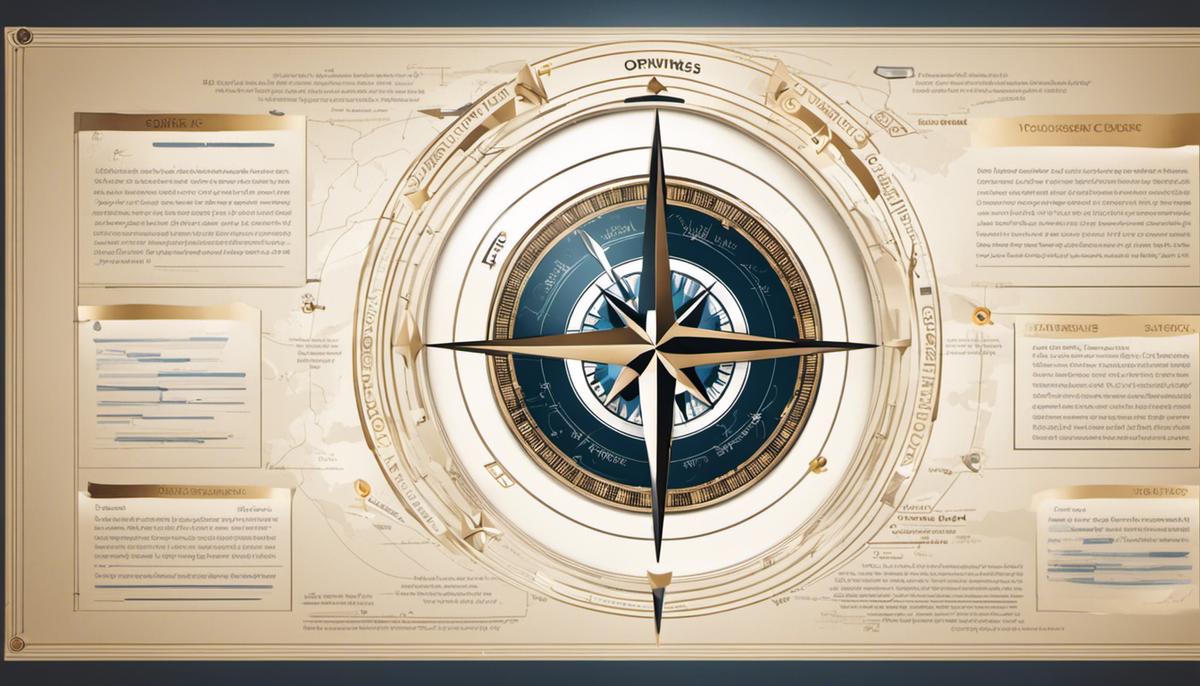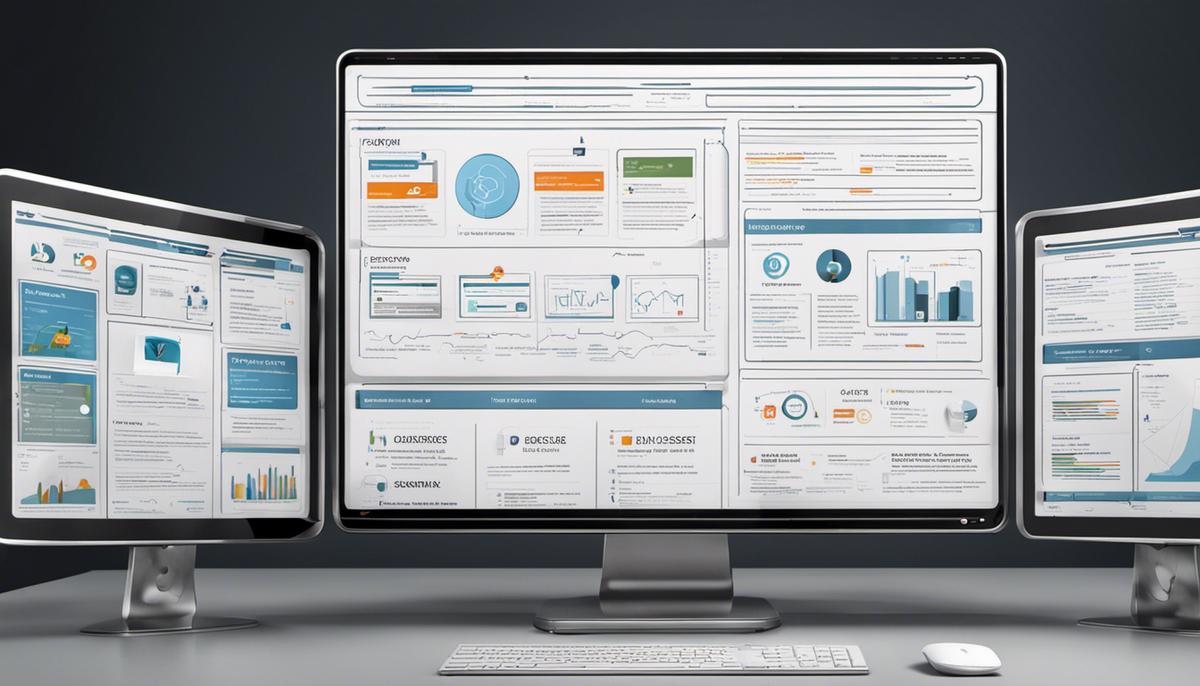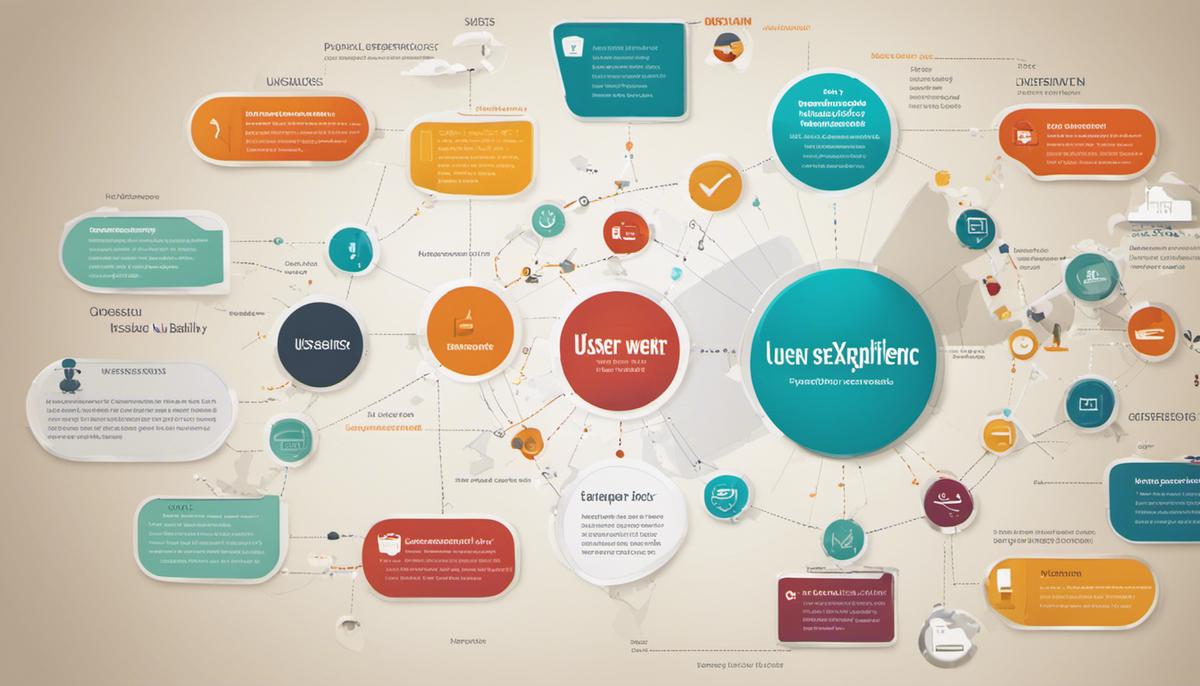The cornerstone of effective web services lies not only in the quality of content and aesthetics, but invariably in the User Experience (UX). This fundamentally shapes the outcome of interaction with the site, acting as a key determinant of user satisfaction and engagement. This discussion offers an in-depth understanding of UX, exploring its role, the principles that frame good UX, and its overall significance in web services. The narrative further delves into the user-centric design approach, critically analyzing how insights gleaned from user behavior can be harnessed to create websites that are intuitive, thereby enhancing engagement. Additionally, the role of technology in sculpting UX will be explored, specifically looking into the application of AI, machine learning and progressive web apps to enhance adaptability and automate personalized user journeys. With a specific focus on UX testing and evaluation, various methodologies will be dissected to understand their role in refining UX. Lastly, real-world case studies of successful UX implementations offer a practical perspective of how such initiatives can bolster user satisfaction, loyalty, and ultimately, conversion rates.
Understanding User Experience (UX)
Title: Navigating the Fundamental Principles of User Experience
The world of technology constantly evolves and it’s always thrilling to navigate through its nuances. One intriguing aspect that significantly shapes this landscape is User Experience (UX). It’s not just about building eye-catching websites anymore. It’s about ensuring that visitors experience seamless interactions and transactions, escalating engagement levels, and ultimately achieving business objectives. So, what foundational principles underline User Experience and why should you care?
Principle 1: Usability
The usability principle is evidently clear-cut and fundamental. If a website is not user-friendly, visitors will flee, quickly. It’s as simple as that. This principle is about how straightforward and intuitive your website navigation is, allowing users to quickly find what they’re looking for without any unnecessary hurdles.
Principle 2: Consistency
Consistency keeps users grounded while exploring your site, ensuring elements don’t shift, colors aren’t jarring, and typography is uniform throughout. Keeping consistent with recognizable symbols, color schemes, and layout patterns enhances familiarity and decreases cognitive load for users.
Principle 3: Simplicity
Complex sites can confuse users, compounding the problem of high bounce rates. Simplifying the design by featuring necessary elements, removing clutter, and delivering concise and clear content can help. Simplicity is about understanding that sometimes, less is more.
Principle 4: Accessibility
A significant yet oft-overlooked principle is accessibility. An effective User Experience is inclusive for all, regardless of abilities or disabilities. AWCAG guidelines provide a framework that helps designers build more accessible websites for everyone.
Principle 5: Feedback
Communicating to users about their actions on a website is key in UX. Immediate feedback like loading symbols, success messages, or error prompts lets users understand that their action has been noted and processed, resulting in increased engagement.
Principle 6: Human-Centeric Approach
Human-Centeric designs place the user’s needs, wants, and capabilities at the forefront. Strategic user research and persona creation should drive design decisions, maintaining empathy for the end-user throughout this process.
Importance of UX Principles
UX isn’t about merely designing beautiful interfaces; it’s about creating digital avenues that meet user needs effectively and flourish in the competitive online ecosystem. A seamless user experience has the power to profoundly impact conversion rates, customer loyalty, business growth, and beyond.
These principles are not just another checklist for web designers but instead are vital guideposts for creating user-friendly, accessible, and meaningful digital experiences. A deep-rooted understanding of these principles will help maximize the odds of creating a successful, engaging website. Every budding tech enthusiast, from those early adopters of new technology to the ones seeking to automate and innovate, can greatly benefit by incorporating these principles into their technological pursuits.
UX, thus, becomes less of a sheer art and more of a profoundly gratifying science yielding measurable results. Let’s navigate this thrilling landscape together, leveraging technology to shape experiences and solve real-world problems.

User-Centric Design Approach
Heading: User-Centric Design – Transforming the Digital Landscape
The digital world is in constant flux and the competition for user attention is fierce. More than ever, businesses are recognizing the inescapable truth – the user is king. Their experience on a website can dictate everything from click rates to conversions, and even brand loyalty. To effectively engage users and enhance their experience (UX), a user-centric design approach is no longer optional but a necessity.
A user-centric design approach puts the user’s needs, preferences, and behaviors at the forefront. It leverages research, analysis, and testing to develop a design that speaks directly to the user’s unique wants and experiences, going beyond the basic principles of usability, consistency, simplicity, accessibility, and feedback. But the question looming large is – how can this approach enhance the UX of a website?
Firstly, it Personalizes the Experience. Personalization is the present and future of UX. A user-centric design makes users feel understood and valued, customizing content, features, and recommendations based on user data and behavior. The user experience is elevated as they interact with a website that ‘understands’ them, thereby increasing engagement and boosting customer loyalty.
Secondly, it Addresses Pain Points. With a deep dive into user behavior analysis, pain points can be strategically identified and addressed. By focusing on relieving these pressure points, user satisfaction increases and website functionality improves.
Next, it Optimizes Performance. No user wants to waste time with a slow-loading website or struggle with a complex navigation process. A user-centric approach emphasizes speed, efficiency, and straightforward navigation, drastically improving the user’s experience.
Subsequently, it Enhances Content Strategy. A user-centric design prioritizes not only the visual factors but the content itself. By understanding user’s needs and preferences, it’s possible to create meaningful, engaging, and relevant content that resonates.
Finally, it Drives Innovation. By being in tune with the user’s needs, it becomes possible to identify gaps, brainstorm innovative solutions, and stay ahead of the curve. This not only enhances the present UX but also ensures future usability and competitiveness.
In the ceaseless quest for technological advancement, don’t forget the most vital piece of the puzzle – the user. By adopting a user-centric design, the engagement and affinity to a website can be elevated to unparalleled heights. Because at the end of the day, technology should be a tool that supports and elevates human experience, not a roadblock that complicates it. That’s the innate power and potential of a user-centric design approach. Accept. Adapt. Advance.

Role of Technology in UX
Let’s proceed to assess the function of technology in refining and upgrading website UX (User Experience), building on the fundamental principles of usability, consistency, simplicity, accessibility, feedback and a human-centric approach.
A main point to emphasize is that contemporary technology plays a central role in enhancing UX, enabling developers and designers to offer seamless, user-centric online experiences.
Firstly, it’s important to consider how AI (Artificial Intelligence) and machine learning algorithms are transforming the way users interact with websites. By analyzing user behavior, preferences, and interactions, these intelligent systems can predict and respond to user needs, thereby drastically improving user engagement and satisfaction levels in real-time.
Dynamic UX is an example of contemporary technology revolutionizing user interaction. Dynamic UX centers on context-aware and adaptive interfaces that modify according to the user’s environment, behaviors, and specific needs. For instance, the implementation of API’s for location-based services can personalize a user’s experience based on their geographical position.
Another revolutionary technology is the application of AR (Augmented Reality) and VR (Virtual Reality) in website design. These immersive technologies offer highly interactive and engaging experiences, paramount in industries such as e-commerce and real estate. They allow users to visualize products or properties virtually in real-time before making any commitments.
Biometrics and voice recognition technologies have also changed the core of UX on websites. The use of facial recognition for authorization and voice commands for navigation makes the interaction seamless and swift, leading to a more satisfying and upgraded UX.
Let’s not forget the impact of Cloud Computing. Faster loading times and access from multiple devices are made possible by decentralized storage. By enhancing website performance, Cloud technology has a positive effect on user experience.
Lastly, data analytics comes into play. Through data mining and in-depth analysis, website developers and marketers can understand user behavior more profoundly, enabling the design of a UX that’s responsive to the particular needs of the target audience.
With the exponential growth of technology, its influence on UX will continue to progress rapidly. From AI to VR, cloud computing to data analytics, the tools for us to create out-of-the-box, user-centric designs are continually evolving. While the user remains central in technological advancement, leveraging these technological tools effectively is key to providing an optimal website UX in the digital landscape of today and tomorrow.

UX Testing and Evaluation
Now, let’s dive into the practical application of UX testing and evaluation strategies. Grounded in a thorough understanding of core principles and leading-edge technology, successful navigation of this vital process can propel user experience to an unparalleled level.
- User Personas:
- UX Testing Techniques:
- Real-Time User Feedback:
- A/B Testing:
- Heed to User Flows:
- Regular Iterations:
First and foremost, create user personas based on extensive research and analytics. A user persona is more than a sketch of a typical user; it’s a comprehensive profile that includes needs, skill levels, expectations, and motivations. This tool helps to visualize the actual user, guiding the design and testing processes.
Utilizing a variety of UX testing techniques to gain diverse insights is paramount. Heuristic evaluations, cognitive walkthroughs, and think-aloud protocols are examples of these techniques. In a heuristic evaluation, expert evaluators review the interface and judge its compliance with usability principles. Cognitive walkthroughs evaluate the learning curve for new or infrequent users. A think-aloud protocol requires users to vocalize their thought process while interacting with the design, providing ample feedback for corrections and improvements.
By implementing user feedback mechanisms, you allow users to express immediate reactions to your design – a quintessential resource for UX refinement. This open line of communication often reveals unexpected flaws or enhancements that can guide ongoing improvement initiatives.
A/B testing entails providing users with two variations of the same design and evaluating which one they prefer. This data-driven approach removes subjectivity from the process and presents quantifiable results to guide improvements.
Prioritize the process of mapping user flows. A user flow is the series of steps a user takes to accomplish a task within your app or website. Distinct user flows backed by well-thought-out scenarios help in revealing the inherent structure of the product.
Never stop evaluating and iterating on your design. Technology and users evolve dynamically, making consistent updates crucial. Regular UX testing should be an integral part of your iteration cycle to keep your product up-to-date and relevant to users’ changing needs.
Remember, there’s an art and a science to testing and evaluation of user experience. Understanding the human component and employing innovative technology are equally important.
Achievement of effective UX isn’t a destination but a continuous journey of innovation, implementation, and refinement. Harness the potent combination of principles, personalized design vision and embracing technological possibilities to create sublime user experiences. They serve as the foundation for the sustained success of any product in today’s digital-driven world.

Case Studies of Successful UX Implementations
– WWW: What, Why, Why (Three Ws)
Embracing the WWW or Three W approach has been a pivotal move by many successful organizations to refining their website UX. This approach entails asking the questions what, why, and why. Design teams start by identifying what a specific feature or element is. Once that’s understood, the focus shifts to the purpose it serves – why it exists. The final why presents an opportunity to scrutinize whether a user can figure out the purpose of the feature. By keeping the user perspective at the forefront, the WWW technique encourages a more intuitive and user-friendly UX.
– Microinteractions
Developing microinteractions – subtle, functional animations or design elements – greatly contributes to a user-friendly and engaging website UX. This could be as simple as an animation when a user hovers over a button or as complex as a progress bar indicating the status of an on-going action. These minor design components add more depth to the UX surface and enhance user engagement, without the user perhaps even realizing these subconscious interactions.
– Layered UX
Several successful organizations have taken to adding multiple layers to their UX. The central premise is to design a multidimensional experience where one action seamlessly leads to another, providing an interactive journey rather than a flat UI with isolated interactions. With every interaction, users are offered more context and depth, fundamentally improving the comprehensive perception of value.
– Mobile Experience Optimization
As mobile device usage continues to grow, a mobile-optimized UI is no longer a bonus but a necessity. It’s not about merely shrinking a desktop site to fit a smaller screen. It is about optimizing key elements like navigation and visibility for the mobile experience – for instance, simplifying menus, optimizing button sizes, and using visual hierarchy to focus on primary actions. By giving mobile UX the attention it deserves, organizations effectively improve the overall user journey.
– Design Systems
Many thriving organizations create structured design systems, a set of adaptable, reusable UI components that ensure consistency and coherence across different channels. This, along with style guides and coding conventions, helps produce unified and harmonious user experiences.
Without a doubt, understanding and applying these strategies allows for an improved and effective UX design. It’s all about staying focused on users’ needs and utilizing technology to meet (and exceed) those needs in innovative ways. In the end, a solid UX design is a valuable asset that could define the difference between thriving in the digital realm or merely surviving.

The transformative effect of an informed, user-centered approach to UX design cannot be overstated. By keenly understanding the behavior, needs, and motivations of users, web services can be refined to provide an engaging, intuitive interface that promotes user satisfaction and loyalty. The potent combination of artificial intelligence, machine learning and progressive web apps has further opened up new possibilities in user journey personalization, elevating the UX to even higher levels. Implementing rigorous UX testing methodologies affords valuable insights into the effectiveness of the design and functionality, acting as a guide to refining and enhancing the UX. Our exploration of real-world case studies underscores the tangible benefits of successful UX design, fortifying the argument for a user-centric design approach. In the ever-evolving digital landscape, UX remains a powerful tool in enhancing website effectiveness, becoming a critical business differentiator in the competitive world of web services.






